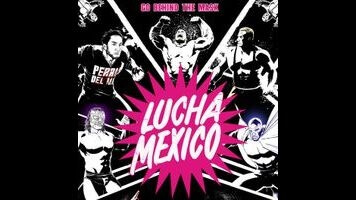For a behind-the-scenes documentary, Lucha Mexico doesn’t reveal much

Because any decent wrestling documentary ought to have a sense of showmanship, the poster for Lucha Mexico crows that the film will take you “behind the mask.” Maybe that’s an obvious angle, but many of the interviewees are quite concerned with their masks: wearing them, not wearing them, having them ripped off in the ring. At several points throughout the film, the camera moves through crowded marketplaces full of them, lingering on children dressed up like their masked heroes. Some subjects, like second-generation wrestler Blue Demon Jr., refuse to be interviewed without their masks on. Suffice to say, masks are a big deal in the world of Mexican professional wrestling, known colloquially as lucha libre. Why are they such a big deal? Even after watching the movie, it’s hard to explain.
That’s the essential trouble with Lucha Mexico, which does a good job of showing these athletes at work and play (or in the gym, where they seem to spend most of their time) but fails at providing cultural or historical context for their actions. The film opens with an impressionistic 10-minute sequence walking us through a lucha libre match, from pre-show shit-talking to post-show photo ops, and all the dwarfs in gorilla suits and enormous muscle-bound men make a strange and intriguing spectacle. Then we cut to Fabian’s Gym, a luchador hangout owned by wrestler Fabian “El Gitano” (these guys aren’t hot on revealing their true identities), and we have our first talking-head interview with “El 1000% Guapo” Shocker, whose story forms a loose framing device.
Over the course of Lucha Mexico’s 105-minute runtime, we travel from match to match, arena to arena, someone’s gym to someone’s home, sometimes at seemingly random intervals. At one point a title card tells us it’s “eight months later,” but we don’t find out for several scenes that the time jump is because of Shocker’s knee injury. References to “insecurity” in the North and footage of massive protest marches pass by with the same amount of weight (that is, very little at all) as the revelation that Shocker has a Growing Pains tattoo. It’s only after the second interview subject dies during the course of filming—we just hear that the first died, we never hear how—that it becomes clear that these guys aren’t joking when they talk about how hard lucha libre is on their bodies. What was intriguing at first gradually becomes vague.
Maybe the point of all of this is that being a luchador is a moorless existence. None of these guys know what’s going to happen to them in five years, and they all say they’ll just keep going until their bodies give out. This unstructured approach does produce some ironic moments, like a scene of “rudo,” or heel, wrestler Último Guerrero lifting weights alone in a room that cuts to an arena full of people booing and throwing their empty soda cups at him. But the larger context of his life and career—and lucha libre’s place in Mexican society in general—remains unexplained. If you’re a lucha libre fan, you might already know all this stuff, in which case you’ll probably think it’s neat to see what these guys’ home lives are like. If not, you might walk away with more questions than answers.